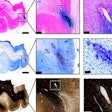
A blood test identified patients with a treatable neurometabolic disease in a prospective trial, suggesting that it can be used to improve diagnosis of a condition that is currently detected using an invasive procedure.
The condition, GLUT1 deficiency syndrome (Glut1DS), causes a range of neurologic symptoms including epilepsy and permanent motor disorders in children and adults. When detected early, Glut1DS can be treated using ketogenic diets and novel experimental therapies, freeing patients from the worst effects of the disabling neurologic disease, but physicians lack a simple way to identify the condition.
Currently, diagnosis relies on an invasive lumbar puncture to measure glycorrhachia and sometimes on molecular analyses of SLC2A1, the gene that encodes GLUT1. The lack of a simple diagnostic test is one reason that researchers think it is likely that a large number of people with Glut1DS are undiagnosed.
To improve the situation, researchers at 33 sites in France ran a multicenter validation study of another way to detect Glut1DS. The study compared the blood test METAglut1, which quantifies GLUT1 on the surface of red blood cells, to glycorrhachia measured via lumbar puncture in a prospective cohort of 428 patients and a retrospective cohort of 67 patients.
Writing in the journal Neurology, the researchers report that METAglut1 was 80% sensitive and more than 99% specific for the diagnosis of Glut1DS. There was substantial agreement between METAglut1 and glycorrhachia, with the noninvasive blood test achieving a slightly higher predictive value than the lumbar puncture procedure in the prospective cohort.
Co-author Fanny Mochel, a professor who works at La Pitié-Salpêtrière University Hospital in Paris, laid out in a statement what the results will mean for the management of patients with suspected Glut1DS.
“These data allow us to validate the benefit of the test formally,” Mochel said. “It will make it possible to look for Glut1 deficiency syndrome in many patients simply and quickly. In the event of a positive result, treatment can be started immediately, significantly improving the prognosis, especially for children in the midst of brain development.”
Mochel and the other authors of the paper suggest performing METAglut1 in any patient aged three months and up who presents with symptoms including intellectual disability, epilepsy, deceleration of head growth, permanent movement disorders, or paroxysmal movement disorders. The validation study suggests that the test can detect 80% of people with Glut1DS and allow them to start timely treatment. The data also suggest that a negative test result can rule out Glut1DS in most cases.



















